76 F. high on Saturday at KMSP.
74 F. average high for June 2.
80 F. high on June 2, 2011.
.11" rain predicted for the Twin Cities tonight (NAM model).
90 F. possible next weekend.
A Busy Sunday. Whether you're loitering at the
Edina Art Fair or taking in the sights, sounds (and food) of
Grand Old Day
in St. Paul, the sun should be out much of today. The best weather
should come morning and midday; clouds increasing this afternoon with a
slight chance of an afternoon thundershower - a better chance of a few
scattered storms this evening and early tonight (best chance south of
the metro).
Wettest May Since 1906. Parts of the
Twin Cities metro picked up a summer's worth of rain last month; it was
the second wettest May ever recorded since 1877. Source: NOAA.
4.34" average June rainfall in the metro area (1970-2000 averages from
NOAA).
A Quiet Week - Hot & Stormy Next Weekend?
Let's just enjoy today and not fixate on next weekend. Dry weather
should be the rule much of this week, but the ECMWF model is hinting at
highs near 90 next weekend, with heavy showers and thunderstorms - the
European model (which does a pretty good job catching trends 4-8 days
out) is printing out several inches of rain next weekend.
Beach-Worthy, Pool-Compatible. I'm liking what I see
from CPC, NOAA's Climate Prediction Center - forecasting a warm
bullseye right over Minnesota and the Upper Midwest for not only the
next 6-10 days, but looking out 2 weeks. Map courtesy of
Ham Weather.
Second Wettest May On Record For The Twin Cities.
9.34" of rain fell last month, the second wettest since 1877, and the
wettest May since 1906, when over 10" of rain soaked the cities. Source:
Minnesota Climatology Working Group and Pete Boulay. Thanks Pete!
* Data for June (coldest, warmest, driest and wettest Junes on record for the Twin Cities) is
here.
May Climate Summary. Here are some very impressive stats from the
Twin Cities office of The National Weather Service: "
After
months of persistent drought conditions across much of the area, the
dry trend was completely reversed in May. While May was warmer than
normal, it will be remembered for the high precipitation amounts, and
ending the drought for most of the area. In fact, the month began with
drought and abnormally dry conditions, and ended with multiple river
flood warnings in effect. Some of the heaviest rain was observed across
central and eastern Minnesota.
- Minneapolis recorded its second wettest May on record with 9.34" of rainfall. The record is 10.33" set in 1906.
- St. Cloud recorded its second wettest May on record with 8.76" of rainfall. The May record is 9.68" set in 1912.
- The NWS Forecast office in Chanhassen recorded an impressive 11.23" of rainfall in May."
4th warmest May on record for Des Moines (average temperature of 68.5 F).
“
It’s highly likely that these fires are going to get so big that
states are going to need outside resources to fight them,” said Jeremy
Sullens, a wildland fire analyst at the National Interagency Fire
Center." - from a Washington Post article below focused on New
Mexico's largest wildfire, and the specter of more major fires to come
later this summer.
"
In the Northern Hemisphere, the late 20th / early 21st century
has been the hottest time period in the last 400 years at very high
confidence, and likely in the last 1000 – 2000 years (or more)." - from a Think Progress story below.
How To Kill Your Career In One Easy (Miami Beach) Evening.
ABC News 20/20 has the tale of John Bolaris, a great meteorologist who
got in over his head in a scam, and is still living with the
consequences. Details below.
Warmest May Temperatures On Record. Every one of the
cities marked with a red dot experienced the warmest May temperatures
ever recorded. Here's a list of the cities from NOAA's
NCDC.
Sunday Severe Risk. According to SPC, the Storm
Prediction Center, parts of the central Plains will experience a few
storms with hail, damaging winds and isolated tornadoes later today.
Looks Like Summer. After nudging 80 today, afternoon
temperatures should climb into the low to mid 80s Monday and Tuesday,
before cooling slightly by midweek. Graph above: Iowa State Meteorology
Department.
The Drought Is Over (For Much Of Minnesota). Here's the latest summary from the
Minnesota Climatology Working Group: "
As of May 29, the U.S. Drought Monitor places some northwest Minnesota counties in the Moderate Drought category. Stream flow measurements
at many locations in this part of the state rank below the 25th
percentile when compared with historical data for the date. Topsoil
moisture in portions of the Red River Valley is said to be Short.
Roughly one-third of the state is rated in the Abnormally Dry category.
The Abnormally Dry designation is often used by the U.S. Drought
Monitoring authors to indicate that the landscape is "coming out of
drought", with perhaps some minor lingering drought impacts. Over
one-half of Minnesota is free of drought designation. This week's map
shows substantial improvement in the drought situation when compared
with early May
when 60 percent of Minnesota was said to be in the Moderate Drought or
Severe Drought categories. The notable improvement in drought
conditions in the southeastern two-thirds of Minnesota is attributable
to an extraordinarily wet spring, including very heavy May rainfall totals."
La Nina? La Schmeena... In spite of a La Nina
cooling phase through April, which correlates with colder, snowier
winters in Minnesota and northern tier states, temperatures have been
trending consistently above average since January 1. The 2012 graph of
temperatures and precipitation above is courtesy of the
local NWS.
May Recap. Here's a good summary of what turned out to be a warm and very wet May, from Mark Seeley and his weekly
WeatherTalk blog: "
In
the simplest of terms May was warm and wet. Mean temperatures for the
month were 2 to 5 degrees warmer than normal, with several days in the
90s F. The extremes for the month were 97 degrees F at Madison on the
18th, and just 24 degrees F at Brimson and Embarrass on the 16th.
Minnesota reported the coldest temperature in the nation just twice
during the month. Rainfall during May was abundant and above normal in
all areas of the state except the northwest. Many individual climate
observers saw their wettest ever May. Some of these included:
Pipestone with 11.06 inches
Windom with 10.83 inches
Lamberton with 9.87 inches
Hawley 6.72 inches
Floodwood 9.14 inches"
* Photo above courtesy of Yahoo.
High Plains Farmers Depleting Groundwater, Study Says. Meteorologist Andrew Freedman from
Climate Central has the story; here's an excerpt: "
Irrigated
agriculture is rapidly depleting groundwater resources in parts of the
High Plains and the Central Valley region of California, which are
both critical regions for food production, according to a new study.
According to the study, if groundwater depletion were to continue at
current rates, 35 percent of the southern High Plains will no longer be
able to support irrigation within the next 30 years. With climate
change projections showing that more severe droughts in both the
Southwest and High Plains are likely as the climate continues to warm,
groundwater resources are going to be even more highly stressed in the
coming decades, the study says."
Photo credit above: "
Satellite image of fields that have
been irrigated by central pivot systems, which use less water than many
other irrigation methods. Credit: Wikipedia Commons."
Massive New Mexico Blazes Marches Through Wilderness As Fears Grow Of More Western Wildfires To Come. Here's an excerpt from an update at
The Washington Post: "
RESERVE,
N.M. — A smoky haze hangs over the rugged canyons and tree-covered
expanses of southwestern New Mexico as the largest wildfire in the
state’s recorded history marches across more of the Gila Wilderness.
The virtually unchecked wildfire is fueling experts’ predictions that
this is a preview of things to come as states across the West contend
with a dangerous recipe of wind, low humidity and tinder-dry fuels. The
Whitewater-Baldy blaze has charred more than 190,000 acres, or nearly
300 square miles, in Gila National Forest and has become the largest
wildfire burning in the country."
A Week's Worth of Temperature Records. Record 24
hour snowfall amounts for parts of Montana, while much of America east
of the Rockies continues to simmer - record rainfall reports from the
Midwest to the east coast. Truly something for everyone.
Click here for an interactive map from Ham Weather.
| Total Records: |
3179 |
| Rainfall: |
465 |
| Snowfall: |
42 |
| High Temp: |
1158 |
| Low Temp: |
154 |
| Low Max Temp: |
328 |
| High Min Temp: |
1032 |
A Wild And Stormy Week. NOAA reports over 3,000
individual severe storm reports in the last week (not counting Friday).
We're heading into a quieter, drier pattern - I suspect next week won't
be nearly as severe from coast to coast. For an interactive map from Ham
Weather (one of my companies)
click here.
What To Do During Severe Storms, Tornado Threats. Here's a great post on tornado and severe storm safety from
fredericksburg.com: "
What
should you do during the threat of severe storms and tornadoes? Here
are some pointers from Mark Doyle of Stafford Fire & Rescue:
- Be prepared. Keep flashlights, batteries, water and other
similar supplies in your home. A battery-operated radio is also good to
monitor storms.
- Keep an eye on what’s happening. Watch the weather radar (Here is the Weather Channel’s Fredericksburg radar).
- Take shelter. Being in a car is one of the most dangerous
places to be during a tornado warning (that’s when a tornado has
actually been spotted, vs. a watch, when conditions are prime for a
tornado). If you’re driving into the storm, head toward a shelter to
wait out the storm."
Your 7-Point Checklist For Hurricane Season. Some very good advice from
thecarconnection.com: "....
But
even though we have no reason to disagree with NOAA, and even though
we're certainly not pessimists (Friday pessimists? Whoever heard of
such?), we would like to mention a couple of things:
1. There have already been two named storms in the North Atlantic before hurricane season officially began.
2. All it takes is one major storm to throw you for a loop -- or worse.
The good news about hurricanes is that, unlike some other natural
disasters, we can see them coming. In the U.S. we know that they're
most likely to appear during the six months between June 1 and November
30, and once they're on the map, our meteorologists can predict fairly
accurately where they're going to hit. That means we have time to
prepare."
Atlantic Storm Forecast Raised By University Team.
MSNBC.com and Reuters has more details: "
Colorado
State University researchers on Friday raised their forecast for the
2012 Atlantic hurricane season to 13 tropical storms, with five
hurricanes and two major hurricanes. In April they forecast 10 tropical
storms, with four strengthening into hurricanes and two becoming major
hurricanes with winds of at least 111 miles per hour during the
six-month season that began on Friday. The revised numbers would still
be slightly below average for hurricanes in the region that includes
the Atlantic Ocean, the Caribbean Sea and the Gulf of Mexico, the
pioneering forecast team said."
How Jacksonville TV Handles Hurricanes. Here's an excerpt of an illuminating, informative article about TV hurricane preparation from
jacksonville.com: "
They
offer First Alert Doppler HD and the 2-Minute Advantage to track
hurricanes, smartphone apps to alert us to bad weather and animation
software to dissect a storm's guts. But when Tropical Storm Beryl churned through a week before today's official start of the hurricane season,
that tech was augmented by all meteorologists on deck at Action News,
First Coast News and News4Jax. Using desks full of computers and their
accumulated knowledge, each station's weather experts gave viewers the
windy news in every way possible, starting with Beryl's approach to its
soaking departure through the rest of the week."
Photo credit above: WOODY HUBAND/Jacksonville.com. "
John
Gaughan, senior meteorologist at WJXT TV-4, says people shouldn't think
that meteorologists are "crying wolf" just becaues a hurricane hasn't
hit Northeast Florida in 48 years."
Hurricane Reporter (Fails). Don't you love it when
the meteorologists tell you to evacuate inland, while they're frolicking
on the beach, hanging onto poles, trying to keep from becoming
airborne? Here's a lovely tribute to everything stupid about hurricane
reporting from
Huffington Post: "
We
love weather reporters. They warn us about dangerous hurricanes and
tornadoes, giving us enough time to duck and take cover. That said,
we're also highly entertained that at the very same time that we're
taking cover, they're marching right into the eye of the storm with a
camera and microphone. And while their reports protect many of us from
getting injured, their (debatably excessive) bravery results in some
pretty entertaining footage."
Drugged, Scammed By Beautiful Women: Weatherman Tells His Story.
Wow, if this isn't a cautionary tale, I'm not sure what is. Note to
self: if it looks and sounds too good to be true, it probably is.
ABC News 20/20 has the story (and video) of John Bolaris, and how a weekend getaway in Miami went very, very bad: "
John
Bolaris was a TV weather forecaster in Philadelphia, but even he could
not predict the intentions of two comely women that approached him at a
luxury hotel bar in Miami. He woke up two days after the encounter with
little memory and even less money -- allegedly drugged twice on
consecutive nights and charged more than $43,000 on his credit card.
Bolaris had become another mark in a scheme run by an alleged Eastern
European crime ring. Hours of FBI surveillance videos and photos
obtained by ABC News show how the group of so-called bar girls, known
as "b-girls," lived and operated in South Beach -- targeting wealthy
male tourists and bilking them of thousands of dollars."
All-Electric Aircraft To Emulate Lindbergh's Historic Transatlantic Flight. Details from
gizmag.com; here's an excerpt: "
Eighty
five years ago, Charles Lindbergh became the first pilot to
successfully fly from New York to Paris non-stop, claiming a substantial
cash prize and securing a place in history in the process. Now another
world record holder, Chip Yates, has announced plans to take on the
same aviation challenge ... but this time the aircraft making the 3,600
mile non-stop flight will be all-electric. The ambitious project is
still in its early stages but the Flight of the Century team has
already developed a patent-pending battery deployment solution to
replenish depleted batteries while the aircraft is in flight."
Social Media Policies At GM, Target, Dish Network Deemed Unlawful By Labor Official. Details from
Huffington Post: "
WASHINGTON
-- In an effort to control employees' activities on Facebook and
Twitter, some U.S. companies have instituted social media policies that
run afoul of labor law and infringe on workers' rights, according to a
memo issued Wednesday
by the general counsel of the National Labor Relations Board. General
Motors, one of the largest automakers in the world, has gone so far as
to forbid employees from posting anything potentially "misleading"
about the company online and even told employees to be careful about
"friending" their co-workers on Facebook, the memo indicates."
How To Make Money On Mobile, In Three Easy Steps. Here's an interesting story from
cnet.com: "...
First,
the only apps and companies making significant money on mobile right
now are making most of that money off in-app purchases. The apps are
free, and if you want upgrades like extra jewels, more levels,
additional features and so on, you pay small amounts of money over time.
Research house IHS speculates that in-app purchasing would generate $5.6 billion in revenue
in 2012, up from $970 million in 2011. That number would equal fully 64
percent of app revenue. And in-app purchases can take all kinds of
forms: it doesn't just have to be buying extra jewels in Bejeweled 2 or the Mighty Eagle to get you out of your Angry Birds jam. It's a popular option in photo filter apps, fitness apps like Skimble are trying it for additional workouts, and the model works fine for subscriptions, as well."
Google To One-Up Apple, Announce 3-D Maps A Week Earlier (Video). Navigating not only 2-D, but 3-D spaces? Sounds pretty cool, and potentially powerful. Here's an excerpt from
mashable.com: "
At
an event entitled “The Next Dimension of Google Maps” next Wednesday,
Brian McClendon, vice president of Google Maps and Google Earth is
slated to give event goers an inside look at what’s in the works for
Google’s mapping service and “provide a sneak peek at upcoming features
that will help people get where they want to go – both physically and
virtually.”
Solar Geoengineering Could Lead To Whiter, Brighter Skies. And who wouldn't want whiter, brighter skies? Gizmag.com takes a look: "
We’ve already heard reports that placing small, reflective particles into the upper atmosphere could actually improve crop yields, but would also significantly reduce the amount of electricity generated by solar power plants and do little to arrest the acidification of the world’s oceans.
Now another potential side effect has been theorized by Californian
researchers, who say that solar geoengineering could lead to whiter
skies."
Photo credit above: "
Solar geoengineering could lead to whiter skies, similar to the hazy and white effect often seen in urban areas (Photo: Shutterstock)."
Proud Papa. Forgive me for 20 seconds while I
acknowledge my youngest son, Brett, who just graduated from the U.S.
Naval Academy in Annapolis. He's off to Pensacola for basic aviation
training. He hopes to fly helicopters, but in reality he'll fly whatever
the Navy wants him to fly. I'm extraordinarily proud of Brett, and all
the young men and women who are serving our nation in a time of war.
Postcard Worthy. A nice Saturday, huh? Every now and
then the planets align and things just work out. A mix of clouds and
sun, low humidity, a fresh breeze, highs in the mid 70s statewide...not a
bad way to spend a Saturday in early June.
Paul's Conservation Minnesota Outlook for the Twin Cities and all of Minnesota:
TODAY: Less sun, isolated PM T-storm possible. Winds: S 10. High: 81
SUNDAY NIGHT: Patchy clouds, risk of a T-shower. Low: 63
MONDAY: Periods of warm sun. Wisconsin thundershowers possible. High: 84
TUESDAY: Warm sun, a dry sky. Low: 62. High: 82
WEDNESDAY: More clouds, isolated T-shower. Low: 59. High: 76
THURSDAY: Intervals of sun, still dry. Low: 59. High: 79
FRIDAY: Partly sunny. Dakota T-storms. Low: 61. High: near 80
SATURDAY: More humid, potential for heavy thunderstorms. Low: 63. High: 88
* temperatures may top 90 next Sunday with more storms - locally heavy rain is possible.
Finally...
"The summer night is like a perfection of
thought" wrote Wallace Stevens. I enjoy every one of Minnesota's manic
seasons, but June is extra-special. Before the bugs, the humidity and
the Dog Days comes a lush, neon-green atmospheric daydream. The long
days energize, jackets banished to cold storage.
Meteorological summer began on June 1, marking the start of what is historically the warmest 90 days of the year.
Rapid warming of the air above the ground can
clash with a chilly hangover aloft, sparking churning thunderheads.
Welcome to the wettest, most tornado-prone month of the year.
But after the wettest May since 1906, second
wettest since 1877, we all catch a break in the coming week: a warming
trend - without the gaping puddles, wailing sirens and beachball-size
hail. I'm happy to be bored for a spell, knowing full well the ying and
yang of a fickle sky floating overhead.
I take nothing for granted.
Expect low 80s for the Edina Art Fair and St.
Paul's Grand Old Days today. A T-shower may pop later today and tonight,
again Wednesday, but much of this week will be dry; highs near 80.
Spring the way it was meant to be.
Soak it up; the ECMWF (European) model, which is
usually on-track with longer term trends, is predicting 90+ highs a
week from today.
Climate Stories...
15 U.S. Military Leaders Say Climate Change Is "A Threat To National Security." An important story from
inhabitat.com; here's an excerpt:
"Climate change is a threat to national security, according to fifteen leaders in the US Armed Forces. As the US military has always been at the cutting-edge of technology — having developed everything from fighter jets that run on biofuel to solar powered backpacks for
troops in Afghanistan — it is no surprise to learn that they are one
of the biggest supporters of alternative fuels and energy. Despite
certain conservative groups attacking clean energy programs, saying
that they are part of “President Obama’s war on affordable energy”, the
US military believes they make the armed forces more efficient and enhance military effectiveness. EcoWatch has
compiled a list of military personnel to show you that despite what
Fox News might say, investment in clean energy does not come at
the expense of national security."
Clinton In Arctic To See Impact Of Climate Change. The story from
AFP: "
TROMSOE,
Norway — US Secretary of State Hillary Clinton flew to Tromsoe in the
Arctic Circle to see first hand the way climate change is opening a
once frozen region to competition for vast oil reserves. Experts here
estimate the value of the Arctic's untapped oil alone -- not including
natural gas and minerals -- at $900 trillion, making it a huge prize
for the five countries that surround the Arctic if they can reach it.
And with climate warming opening up some 46,000 kilometers a year that
had once been bound in ice, the region is expected to burst open, not
just with oil exploration but with East-West trade along a more
accessible northern route."
Yet More Studies Back "Hockey Stick": Recent Warming Is Unprecedented In Magnitude And Speed And Cause. Here's an excerpt from
Think Progress: "
In
the Northern Hemisphere, the late 20th / early 21st century has been
the hottest time period in the last 400 years at very high confidence,
and likely in the last 1000 – 2000 years (or more). It has been
unclear whether this is also true in the Southern Hemisphere. Three
studies out this week shed considerable new light on this question.
This post provides just brief summaries; we’ll have more to say about
these studies in the coming weeks. First, a study by Gergis et al., in the Journal of Climate
uses a proxy network from the Australasian region to reconstruct
temperature over the last millennium, and finds what can only be
described as an Australian hockey stick. They use an ensemble of 3000
different reconstructions, using different methods and different
subsets of the proxy network. Worth noting is that while some tree
rings are used (which can’t be avoided, as there simply aren’t any
other data for some time periods), the reconstruction relies equally
on coral records, which are not subject to the same potential (though
often-overstated) issues at low frequencies."
Graphic credit above: "
Australian mean temperatures over the last millennium, with 95% confidence levels."
Who Is Behind The Conspiracy Against Climate Change Science? Here's an eye-opening story from
truth-out.org: "
In a special message to Congress, a president of the United States made the following statement:
"This generation has altered the composition of the atmosphere on a
global scale through ... a steady increase in carbon dioxide from the burning of fossil fuels." Who
was that president? Not Barack Obama, although he has said similar
things, and not George W. Bush, whose standard line was that we needed
to study the problem more. It was President Lyndon Johnson, issuing
what may have been the first ever warning by a political leader on the
potential for what we now call climate change - way back in 1969.
Johnson, of course, had a foreign war on his hands and other more
pressing issues to deal with at home. And while there was already a
scientific consensus at that early date that the burning of fossil fuels
would gradually warm the planet, nobody could say for sure how soon
the impacts would be felt or how significant they were likely to be."
Clouded Forecast. We may soon be losing some of our ability to monitor Earth from space, as reported in this Op-Ed in
The New York Times from meteorologist and climate scientist Heidi Cullen: "
OUR
ability to forecast the weather is in big trouble. Last month, the
National Research Council concluded that the nation’s system of
Earth-observing satellites is in a state of “precipitous decline” and
warned of a “slowing or even reversal of the steady gains in weather
forecast accuracy over many years.” This worrisome development puts all
of us in harm’s way and should particularly trouble us as the annual
six-month hurricane season begins today. Gathering timely and accurate
weather data is, of course, vital to saving lives. The deadliest
hurricane ever to strike the United States hit Galveston, Tex., on
Sept. 8, 1900, killing as many as 8,000 people. Scientists had lacked
the tools to predict the storm’s severity." Photo: NOAA.
The Race To Map Africa's Forgotten Glaciers - In Pictures. Here's a clip from
The Guardian: "
Project Pressure,
a collaboration of photographers, scientists, web developers and
cartographers, is working to document the terminal decline of many of
the world's glaciers as they slowly melt away. Here they trek to the
slopes of the Rwenzori mountains in Uganda and the Democratic Republic
of the Congo."
Photo credit above: "
Project
Pressure is a non-profit organisation which has set out to document the
world’s vanishing glaciers. A recent expedition to Uganda and the
Democratic Republic of the Congo started in burning sun trekking up
through rainforest."
Photograph: Klaus Thymann.
A Libertarian Approach To Global Warming. Here's a snippet of an Op-Ed from
The Washington Post: "
Jonathan
Adler, a law professor at Case Western University, has been writing a
very interesting series of posts at The Atlantic on conservative
approaches to various environmental problems. Here
he lays out the libertarian case for tackling climate change:It is a
well established principle in the Anglo-American legal tradition that
one does not have the right to use one's own property in a manner that
causes harm to one's neighbor. There are common law cases gong back
400 years establishing this principle and international law has long
embraced a similar norm."
Humanity's Future Is Warm And Dystopian, And Set In Alaska. Details from
The Alaska Dispatch; here's an excerpt: "
I
have seen the future and it's dank, dark and dystopian -- and it takes
place in Alaska. At least in one Oklahoma author's eyes, it does. Last
year, as a newbie book producer, I commissioned novelist Jim Laughter
in Oklahoma to write a book about mankind's shaky future on this third
rock from the sun, and he immediately said yes. The novel, titled
“Polar City Red,” is out now, and the entire story, from page one to
the final paragraph, belongs to Mr. Laughter. His name is on the book
cover, not mine, and all profits, if any, go to him. It's his book. What
did I do? I gave it its title, and I suggested, as a former Alaskan,
its theme and its setting in Fairbanks. Jim wrote the entire yarn,
creating his own cast of characters and giving it his own time frame. I
originally suggested setting it in 2500, some 30 generations from now.
Jim decided to set the story in 2075, to give it a more immediate and
closer to home feel. He was right to do so."
So You Think You Can Think? Think Again! There's
some interesting new research suggesting that some of us are more open
to facts, to new data, to changing our minds about science (or anything,
given enough data points) than others. Here's an excerpt from
Huffington Post: "
A
paper in this week's Nature Climate Change reinforces a really
important insight about the limits of our ability to reason and think
rationally. It's another blow to the crumbling ramparts of the belief
that the Enlightenment, as Kant put it, was "Mankind's final coming of
age, the emancipation of the human consciousness from an immature state
of ignorance and error." Sorry, Emmanuel but we have a long way to go.
In "The Polarizing Impact of Science Literacy and Numeracy on Perceived Climate Change Risks,"
Dan Kahan and colleagues demonstrate how greater science literacy
leads those who deny climate change to deny it even more. And the more
educated the deniers of were, the more polarizing the facts -- neutral,
spin-free facts -- became!"
Hurricanes And Climate Change. Here's an excerpt of an interesting story from
cleanenergy.org: "
This blog is the first of a four-part series by Simon Mahan, Chris Carnevale and Jennifer Rennicks
on hurricanes and energy. Future blogs will focus on Hurricanes and
Wind Farms, Hurricanes and Coastal Adaptation, and Hurricanes and Oil
Rigs. Today officially marks the start of the 2012 Atlantic hurricane season
— the six months each year when hurricanes, tropical storms and
tropical depressions form in the Atlantic Ocean. While there’s nothing
particularly magical about the time between June 1 and November 30 that
precludes storms from brewing outside of this range, it is worth noting
that neither Tropical Storm Alberto nor Tropical Storm Beryl waited
for the official starting gun. Thus, for the first time in more than
100 years, two tropical storms with high enough wind intensities to
earn names have formed before the season officially began."
North Carolina Wishes Away Climate Change. Here's a clip from a fascinating story at
Mother Jones: "
Some
lawmakers will go to great lengths to deny the reality of climate
change. But this week, North Carolina lawmakers reached new heights of
denial, proposing a new law
that would require estimates of sea level rise to be based only on
historical data—not on all the evidence that demonstrates that the seas
are rising much faster now thanks to global warming. The sea level
along the coast of North Carolina is expected to rise about a meter by
the end of the century. But business interests in the state are worried
that grim projections that account for climate-induced sea level rise
will make it harder for them to develop along the coast line."
Photo credit above: "
Shad fishing on the NC coast, circa 1935 to 1940." State Archives of North Carolina/Flickr.
Climate Science: The X's And O's Of CO2. How sound is the science? Here's a good overview from
Huffington Post: "...climate "science" is a joke, not a scientific field."
-- Tom Blumer, NewsBusters Says you, Tom!... and the
U.S. Chamber of Commerce... and the
American Reform Party...But
just how legit are the scientific assessments of these unscientific
bodies? Let's apply a simple layman's litmus test and see if their
claims merit deeper analysis.
Is the basic premise of global warming even logical?
What on Earth has
previously addressed the soundness
of global warming's underlying formula. Greenhouse gases and the
greenhouse effect occur naturally in our environment. Earth would be
too cold for our survival without them, and their existence has been
proven by "
centuries of science, laws of physics and direct observation." A simple experiment can demonstrate CO2's heat-trapping properties, as you'll see at the 48-second mark of
this Bill Nye video. Or you can see the principle proven in
Mythbusters' "Young Scientists Special."
More Corporate Contradictions On Climate.
Huffington Post has the story; here's a snippet: "
A few weeks ago I wrote a piece
revealing that a number of major U.S. corporations that publicly
acknowledge the threat of global warming are members of the American
Legislative Exchange Council (ALEC), a stealthy lobby group that
ghostwrites legislation to scuttle climate change initiatives. This
corporate disconnect on climate goes way beyond ALEC. A new report
analyzing more than two dozen Standard & Poor 500 companies found
that despite their public pronouncements about the reality of global
warming, three-quarters of them at least indirectly hindered climate
change mitigation efforts through lobbying, campaign contributions,
agency comments, or their affiliations with trade associations and
advocacy groups."
Photo credit above: "
ConocoPhillips CEO James Mulva has
testified on Capitol Hill about the "potential long-term risks
associated with climate change," but his company has flip-flopped on
the issue for years." (AP)
Conservatives Attack Scientific Findings About Why They Hate Science (Helping To Confirm The Science). Here's an interesting post from Chris Mooney at
alternet.org: "
Two months have passed since my new book, The Republican Brain, was published, and so far it has gotten a lot ofmediaattention.
However, the coverage has followed a noteworthy pattern: while
progressives and liberals seem intrigued about what I’m saying, the
so-called “mainstream” media—the CNNs of the world—have shied away from
the subject. What’s up with this? Well, a book with conclusions closely
related to mine—Norman Ornstein’s and Thomas Mann’s It’s Even Worse Than It Looks: How the American Constitutional System Collided With the New Politics of Extremism—seems as though it is being handledsimilarly by
some in the press. And perhaps there’s a reason: Centrist (aka
“mainstream”) journalists might well prefer that the findings of these
books not be true."
Photo credit above: shutterstock.com.
Companies Need To Disclose Climate Risk: Investors.
Reuters has the story; here's an excerpt: "
Institutional
investors and environmental advocates on Thursday urged companies to
disclose their risks from the impact of climate change, two years after
the Securities and Exchange Commission issued guidelines for firms to
do just that. While the
SEC guidelines do not force publicly traded corporations to assess such
climate-related events as severe storms, droughts, floods and heat
waves, some companies have done so anyway. But those disclosures have not been particularly useful, according to Maryland State Treasurer Nancy Kopp."
The People-Power-Inflicted Downfall Of Heartland. Details from
The Huffington Post: "
It
has been a rough few weeks for the Heartland Institute, the
"intellectual" nexus of the fossil fuel-powered machine to disparage
climate science in the United States. Nineteen corporations have pulled
more than $1 million in expected funding, leading President Joe Bast to
ask attendees at the recent Heartland climate denial conference
whether they had a "rich uncle"
who could help out. Seriously. In a time when most news about climate
change is bad, Heartland's decline has been a rare bright spot. Which
has caused many observers to tackle the obvious question: how did this
happen? In the reductive rendering of the mainstream media, the
narrative has become that Heartland simply overplayed its hand by
launching a billboard campaign
comparing people who believe in global warming to the Unabomber and
Osama Bin Laden, one of the single dumbest PR moves in recent history."


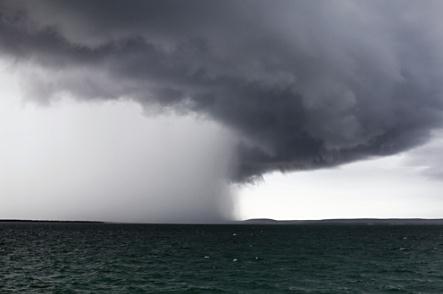






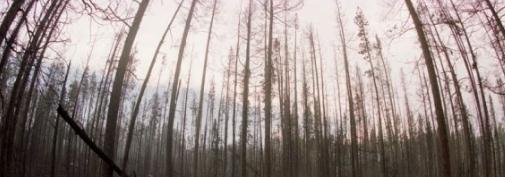
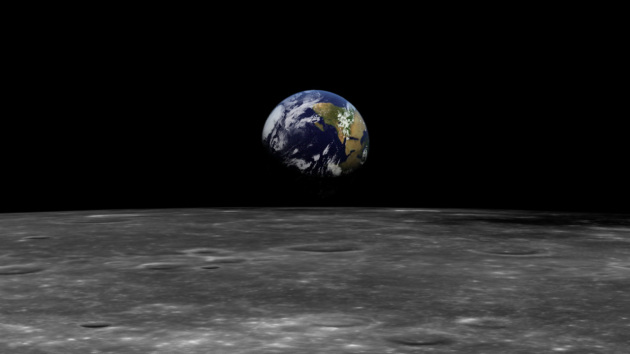

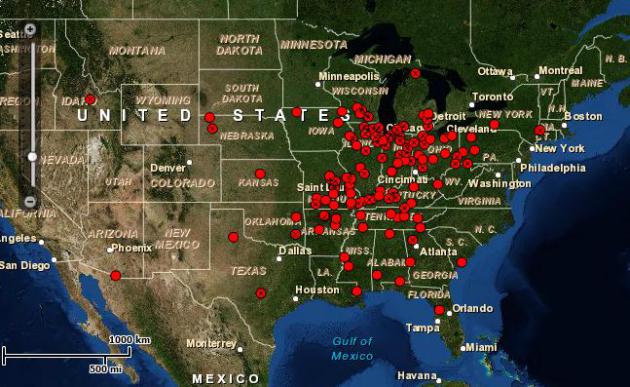
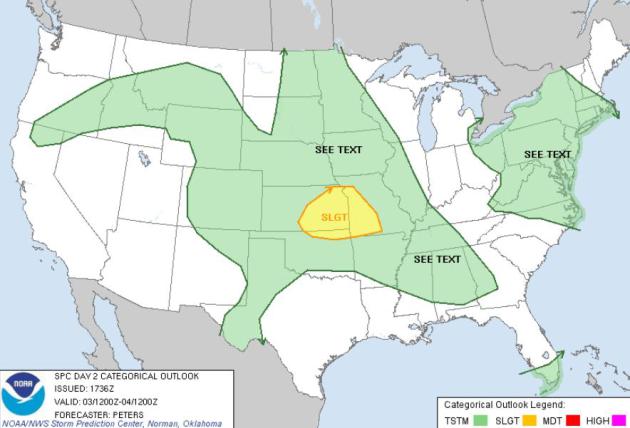


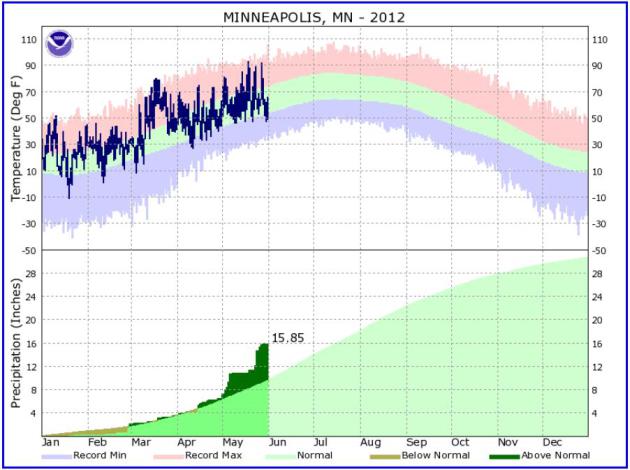
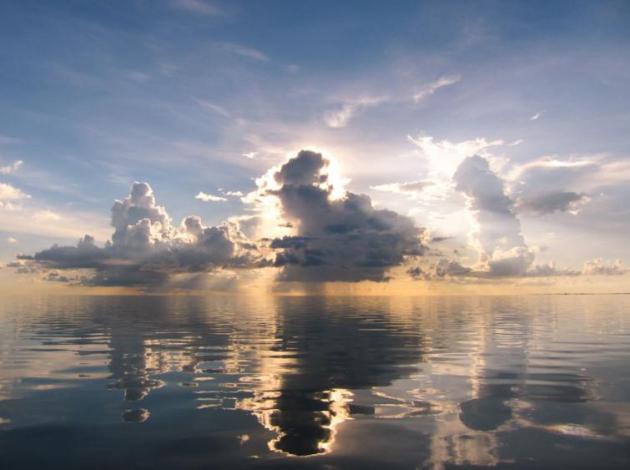

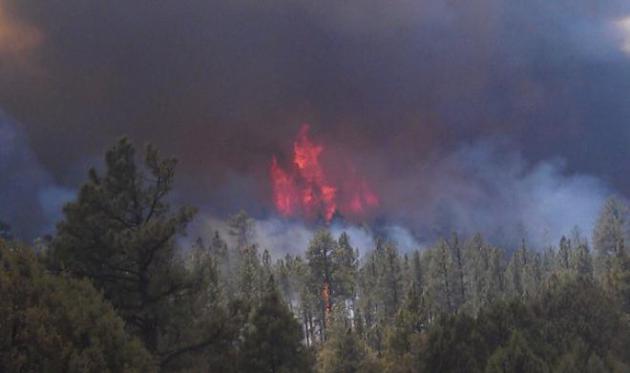
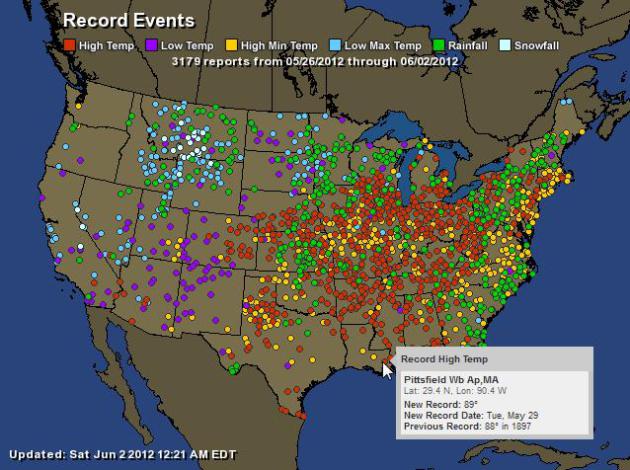
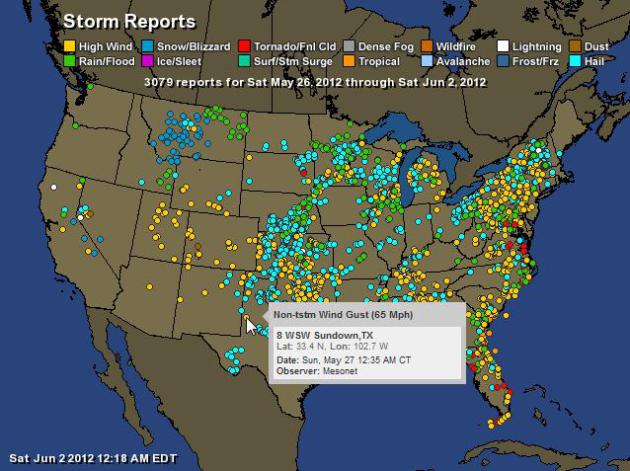
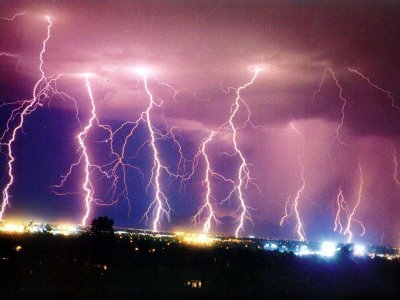
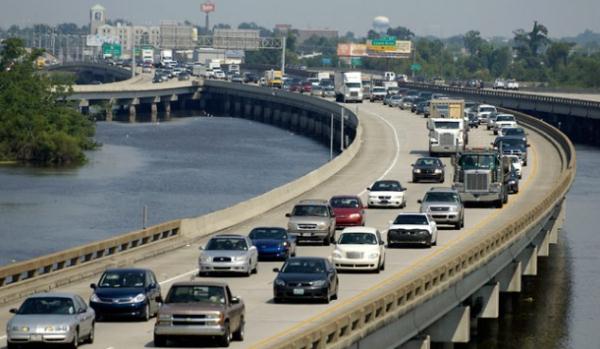
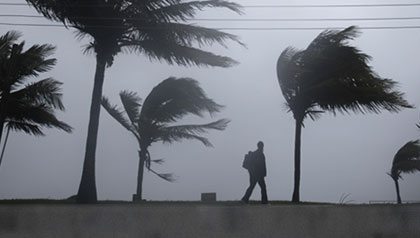

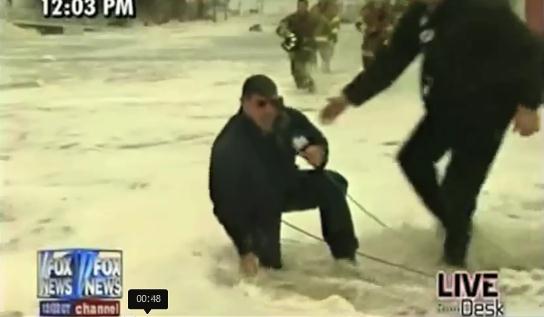

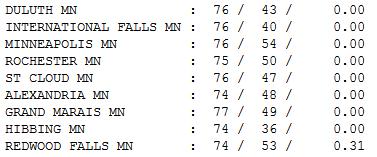



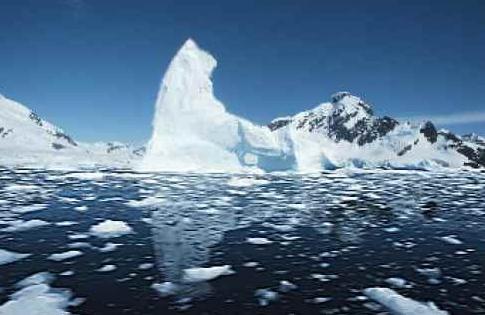
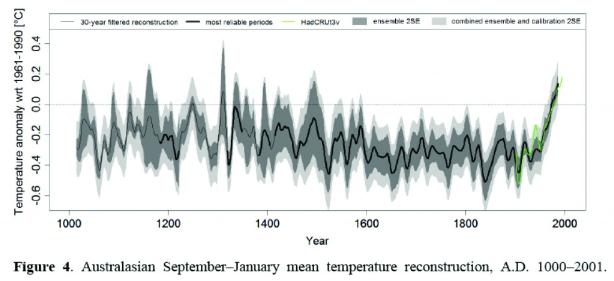

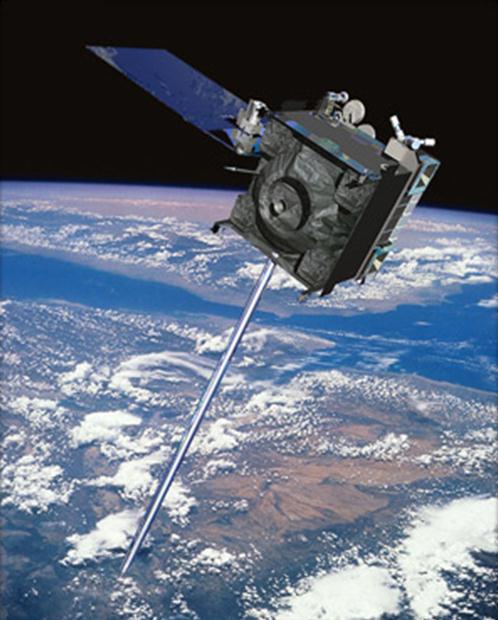


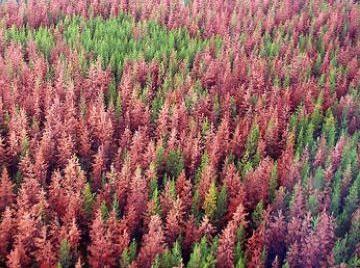



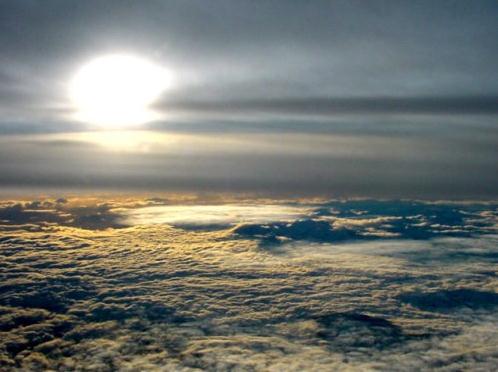


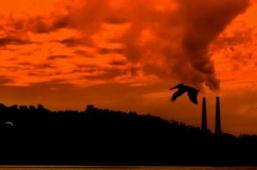






No comments:
Post a Comment